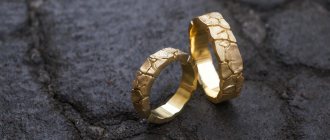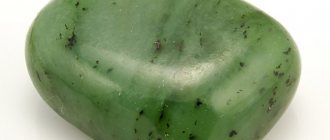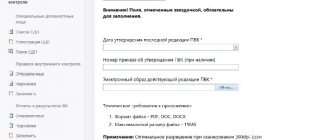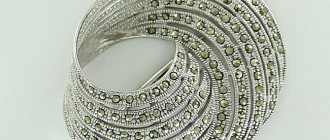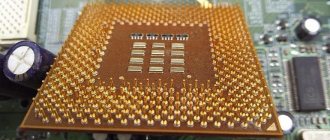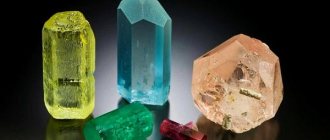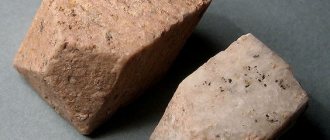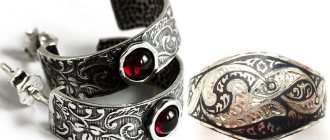Consumers accustomed to ordinary metal coins believe that this kind of nickel alloys have been used for a very long time, and real gold and silver “money” is nothing more than a treasure of royal chervonets. In fact, before the Second World War, metal money from more serious alloys was very common. The silver fifty-kopeck piece of 1924 is one of them.
What does a silver fifty-kopeck piece look like?
Silver fifty dollars
Fifty dollars is a coin or banknote worth half a ruble, known since the 13th century AD. It appeared simultaneously with the ruble-hryvnia. The origin of the name “fifty dollars” remains a mystery to this day. According to the assumptions of historians, the word “tin” was the name for the ruble.
During the Soviet period, the silver fifty-kopeck piece began to be minted in 1921, becoming a very common coin of that time. By the way, in 1924, 12,998,000 of these coins were issued, which exceeded the production of any other coin of the tsarist period in Russia.
There are silver fifty-kopeck coins produced in the USSR in 1921, 1922, 1924, 1925, 1926 and 1927, which were first created by the Petrograd Mint under the leadership of Pyotr Latyshev with the corresponding marking “P.L”, and after production was transferred to the English Mint in Birmingham, and on On the edge of the coin (called “edge” among numismatists), the initials of the new contractor “T.R” (Thomas Rose) appeared. All of these coins circulating in the society of the USSR weighed 10 g and were made from silver with a purity of 900. The nominal weight of the silver contained in it was indicated on the edge of the coin - 9 g.
Story
The coin began to be issued at a difficult time for the young Soviet country. The civil war was still going on, but was nearing its end. In those years, before the innovations, there was no question of issuing banknotes, so they acted the old fashioned way: they minted coins from silver. Fifty kopecks was no exception.
The first batch was released in St. Petersburg in 1921 at the Tsar's Mint. Of course, these were not pure silver coins: only 90% was high-grade metal (900), and 10% was impurities. If we consider that its mass (weight) is 10g, then there was 9g of silver.
Appearance of fifty dollars
The obverse (front side) depicts a blacksmith standing at an anvil. He raised his hammer, preparing to strike a sharp, strong blow. There is a forging on the anvil, and a sheaf of sparks shoots vertically upward from it. Between the hammer's leg and the anvil there is a gear wheel, and behind his back there is a plow. The whole composition seems to be set on a wide strip separating the date (1924 or 1925) with a small “g” from the image. A dotted rim runs along the edge of the coin.
On the reverse (back side) the upper half of the fifty-kopeck piece is occupied by the coat of arms of the USSR with two sheaves of wheat tied with a ribbon 7 times. To the left of the coat of arms is the first half of the country’s name “SS”, and to the right is the second “SR”, stylized as a hammer and sickle. As on the obverse, there is a rim of dots along the edge, framing the slogan “proletarians of all countries, unite!”, inscribed around the circumference of the coin and separated from the central composition by a solid circular line that breaks off at the site of the coat of arms. The coat of arms rests on a wide horizontal strip dividing the reverse in half, under which is stamped how much the coin is worth, its denomination is “one fifty dollars”.
On the edge of the coin of 1924 the inscription “pure silver 9 g (2х 10.5 d) P.L” is typical. as mentioned above, depending on the place of production, instead of “P.L” there may be “T.R”. The symbols in brackets stand for “2 spools 10.5 shares” and are specialized terms for the system of measures used in coinage in Russia. 1 Russian pound = 96 spools, 1 spool = 96 shares. 1 Russian pound = 409.5124 g. That is, 1 spool will be equal to 409.5124/96/96 = 4.26575417 g, and 1 share = 0.044434939236 g. If we substitute the resulting numbers into the equation 2 spools + 10.5 shares , then it will turn out to be 9 g. On the fifty-kopeck note of 1925, the inscription on the edge has lost specialized terms, beginning to look like “pure silver 9 g P.L” (or T.R).
Valuable specimens
9 g of silver is not worth that much, since this metal, although noble, is relatively cheap. Therefore, the price of ordinary specimens from 1924 is low - about 600 rubles. However, due to the fact that coins were issued in different places and under different circumstances, products were born that were, if not unique, then very rare. This was mainly due to errors and negligence.
Coin on the palm
Common varieties are already divided into 2 groups:
- on the edge there is the inscription 9 grams and the initials TR, that is, Thomas Ross, the same manufacturer of coins in Birmingham, the majority of such products;
- the initials PL indicate that the silver “money” was issued in Petrograd by Pyotr Latyshev. Fewer of these were minted, so their cost is slightly higher.
The silver of one fifty-kopeck piece from 1924 is pure, but exactly the same in all cases. The difference in the value of a coin is determined by the difference in minting.
Coins of the last century
The types of “flaws” and their rarity determine the collectible value of the specimens.
- Even at the very beginning of the work, some of the products ended up in old gurtle wheels. As a result, on the edge of the Soviet 1 fifty-kopeck piece an inscription appeared in Old Church Slavonic: “Pure silver 9 grams,” and instead of the initials of Pyotr Latyshev, the initials of Viktor Smirnov, the royal mint manager, appeared. This “option” is very rare and is estimated at 50 thousand dollars.
- A 1924 fifty-kopeck piece of 9 grams of silver may also have very strange initials on the edge - OR, that is, Thomas Thomas. This is still the same Thomas Ross, but changed in a different way in a very intricate way: the name Thomas was transformed into Thomas, written with the letter “Fita”. Later, since this letter disappeared from the Russian alphabet, the products were rejected and not a single copy came into circulation. Such one fifty-kopeck piece is extremely rare, estimated at 1,200,000 rubles. The photo shows a rare specimen.
- Transitional - arose when overlaying designations of design elements from the English and Petrograd Mint. It is unknown where the transitional specimens came from, and in fairly large numbers. It seems that some of the ready-made coins were sent to different yards in order to make an inscription on the edge. As a result, copies appeared where the inscription corresponds to the TR series, and the image of the coat of arms corresponds to the PL series. They are distinguished by a characteristic feature: on the inscription “Workers of all countries, unite,” the comma does not touch the circular rim. The photo shows a transitional option.
- Items without any inscription on the edge are also rare. There is also an option when there is no dot between the letters T and P.
The price of fifty dollars and rare fifty dollars
Many owners of one-fifty silver coins who are not collectors wonder how much this money is worth today. To this day, a lot of fifty-kopeck coins from the Soviet period have survived, so their price is approximately equal to the price of the silver they contain . The cost of an ordinary fifty-kopeck piece, which is not a representative of rare varieties, is taken into account with its wear, the so-called stamp shine. The purer the shine, the higher the price of the coin. How much a coin is worth is also affected by how long it has been in circulation. The more a single silver Soviet fifty-kopeck piece was used, the more traces of scratches, dents, etc. it will show.
But there are also rare specimens that came out of limited quantities. Their price can soar up to several tens of thousands of dollars, although generally their value is about 10-15 times higher than the price of an ordinary silver fifty-kopeck piece. You can sell a Soviet fifty-kopeck piece at numismatic auctions, and find out how much certain pieces cost by asking a collector or specialist. Let's look at some differences between serial coins and rare ones.
Characteristics
The coins have a clear circle shape, with a diameter of 26.67 mm and a thickness of 2 mm. This standard was adopted during the reign of the Tsar and was preserved until those times. The fifty-kopeck sign was quite voluminous with a complex and pleasant design.
Obverse
The obverse of the stamp contains the coat of arms of the RSFSR in the center with classic images of the hammer and sickle. The background is the sun's rays. All this is depicted on a shield, on the sides of which there are ears of wheat. The coat of arms is enclosed in a frame of raised dots.
An abbreviation with the inscription: “RSFSR” is located at the bottom, and a slogan calling for the unification of the proletarians of all countries runs along the edge.
Reverse
The reverse of the stamp is no less remarkable. In the center there is a five-pointed star with a circle in the middle, occupying almost the entire area. The number “50” is visible in the circle, indicating the denomination of the banknote. The year “1922” is stamped between the lower star rays, indicating the period of issue of the coin.
Around the star there is a frame of convex dots, which is repeated along the edge. Between them at the top there is an inscription - “50 kopecks”. On the sides there is an original ornament embossed, represented by two wreaths connected at the bottom by a ribbon: on the right side - from oak branches, on the left - from laurel branches.
Rare fifty dollars 1924
Mint of Peter Latyshev:
- The inscription on the edge is in letters of the Old Russian alphabet.
- “Thin workers” is the common name for one of the varieties. This is due to the fact that the stamp with a worker on the obverse differs from the common one with a thicker hammer handle and a smaller worker.
- As if a transitional option between coins minted by the workshop of Peter Latyshev and the Birmingham Mint. This coin is characterized by a slogan on the obverse as on Soviet minted coins, and a coat of arms - as on English ones. There is a special sign that allows you to quickly highlight the “transitional” fifty-kopeck piece - this is a comma between the words “countries” and “unite”, which does not touch the inner solid rim under the inscription.
- Silver 50 kopecks with the weight of silver indicated only in old coinage terms, that is, in spools and shares.
Thomas Rose Mint:
- A fifty-kopeck piece with a dot missing on the edge between the initials of the mint owner: “T R”.
- A coin with shorter rays emanating from the sun on the coat of arms than on its serial counterpart.
- Coin with a changed font of the inscription on the edge.
- Particularly noteworthy are the fifty-kopeck coins with the use of the obsolete letter fita “Ѳ” instead of the letter “T” in Thomas Rose’s initials, which are considered a real rarity, since they are examples of a trial run of coins, the first issued at the English mint. The price for such Soviet silver fifty dollars can be quite high. And how much a specific copy costs must be checked with a specialist.
Secrets of the Soviet silver half
The word “fifty dollars” is so familiar to our ears that we don’t even think about what it means. If we ask a non-specialist about its etymology, we will probably hear in response that this concept comes from “half”. But half of what? Tina? What kind of “ting” is this? In fact, this question is not so simple. Why 50 kopecks is usually called “half” is not entirely clear - there is a version that the word “tin” meant ruble. But in Vladimir Dahl’s dictionary the verb “tinat” is mentioned, that is, “to cut”, “to chop”. As an option, the scientist also cites the archaism “weed”, “weed” - half of the carcass, chopped along the ridge. Which version to follow is up to you to decide.
Old Russian hryvnia
In Ancient Rus', half a ruble-hryvnia was called poltina. When the country resumed its own coinage in the 14th century (the Golden Horde yoke had already begun to weaken), the fifty kopeck piece, like the ruble, was used as units of account for large trade transactions: 1 half ruble = 100 money. But the real half-ruin coin has been known only since the middle of the 17th century.
In 1654, Tsar Alexei Mikhailovich made a short-sighted decision to issue copper fifty kopecks, which were equivalent to 50 silver kopecks. The unsuccessful reform led to the Copper Riot and the withdrawal of all copper money from circulation.
Tsar Peter the Great is famous for his reform activities. He also carried out a monetary reform, as a result of which silver coins of large denominations, including fifty dollars, came into circulation. During the 18th-19th centuries, the half ruble was minted regularly according to a weight norm tied to the weight of the silver ruble.
Tsar-reformer Peter I
New state – new money?
1917 marked the end of Tsarist rule in Russia, and the Provisional Government lasted only a few months in power. During the Civil War, on the territory of the former empire, royal banknotes, “Kerenki”, “Sovznaki” and many local issues were in circulation. The naturalization of economic relations, hyperinflation and growth in emissions led to a breakdown of the monetary system. Depreciated money could not serve as a measure of value, so the Bolsheviks, who won the war, introduced a card system. The young Soviet state was in dire need of monetary reform, which was carried out in 1922-1924.
The decree of the Central Executive Committee and the Council of People's Commissars of the USSR dated February 22, 1924 “On the minting and release into circulation of silver and copper coins of the Soviet model” provided for the release of new silver and copper coins. From silver of 900 standard, rubles and fifty kopecks appeared in circulation. And also 20, 15 and 10 kopecks, where 500-carat metal was used.
The first Soviet fifty dollars
On the obverse of the first Soviet fifty dollars of 1921 and 1922, the coat of arms of the RSFSR was depicted, and on the reverse - a five-pointed star. The design of coins from 1924-1927 is somewhat more complex. Firstly, the coat of arms of the RSFSR is replaced by the coat of arms of the USSR, and the denomination “50 kopecks” is changed to “one fifty kopecks”. In addition, the denomination of the coin is now indicated on the obverse, rather than on the reverse. On the last one appears the image of a blacksmith raising a hammer over an anvil. The dynamism of the picture is given by sparks flying to the sides. Perhaps the miniature symbolizes the great work that the young state will have to go through on the path to building communism. Behind the blacksmith's back is a plow and a sickle, and under his feet is a cogwheel. The first are attributes of a peasant, the second is a symbol of technological progress. These items, like the coat of arms of the Soviet Union, should represent the unity of workers and peasants
Trial fifty dollars of the USSR
Coins of 50 kopecks were minted at two mints at once: Leningrad and Birmingham (England). The half coins issued in the USSR had the letters “P.L.” on the edge, denoting the initials of Pyotr Latyshev, who held the position of Mintsmeister - that was the name of the head of the mint or its department. Half of foreign production can be distinguished by the letters “T.R.” - named after Thomas Rose, who supervised the issue of Soviet money in England. There are also known trial fifty-kopeck notes with the inscription through fita ("Ѳ.Р.") - they are considered rare.
"Platinum" half
Separately, I would like to talk about the initials “P.L.” on the edge there are 50 kopecks, 1924. More precisely, about one conspiracy theory about the appearance of these letters on Soviet fifty-kopeck coins. As you know, people’s imagination is limitless, so the legend was born that the minting of the coin “P.L.” supposedly it was not silver, but platinum that went. As if the production of such money was part of a criminal plan to steal platinum reserves from the mint. Focusing on the abbreviation “P.L.”, the attackers planned to remove “platinum” coins from circulation. Despite the obvious delusion of this version, this story sometimes surfaces, but you should not trust it.
The letters “A-G” as part of the edge inscription
But not all coins issued in Petrograd have the initials of Peter Latyshev on the edge. In 1921-1922, half coins with the letters “A.G.” were minted at the mint. The fact is that for a short time Arthur Hartmann was the mintzmeister. It is not known how large the circulation of the “A.G.” batch was, but one thing is certain - not many coins with the date “1922” have survived. Among numismatists, these fifty-kopeck pieces are valued higher.
Edge with the initials “A.G.”
Rare "hammers"
The “Hammerers” of 1924 are known, whose edge inscription is made in Old Church Slavonic script, as was the custom in the Russian Empire. Experts explain this by saying that a small part of the coins accidentally passed through the gurtile ring left over from Tsarist times. On these fifty kopecks the initials of the mintsmeister “V.S.” (Viktor Smirnov).
By the way, sometimes you can find fifty dollars without a border inscription at all. If you come across such a coin, and it is not a Chinese counterfeit (they can be found on the Russian market), then you have a great rarity in your hands. However, you should not buy coins in suspicious places - it is better to prefer a trusted and reliable store.
Some facts about fifty dollars
There are legends about a Soviet-era silver fifty-kopeck piece minted from platinum, but the rumor about the existence of such an example or even a series has not the slightest confirmation, so most likely the platinum fifty-kopeck piece is just a fiction.
Another interesting fact is that in the late 80s, fishermen made homemade spoons from silver fifty dollars. The assortment in fishing stores of that time was very crude, and part of the population who was fond of fishing had to make their own tackle. Silver was perfect for this purpose.
Price
Let's consider the cost in the current market depending on the varieties. Let's find out the prices in Russian rubles presented at auctions for coins of 50 kopecks for two main positions - AG and PL.
| Name | VG | G | AU | UNC | VF | F | XF | Proof |
| AG | — | — | 2063 | 3484 | 936 | 475 | 1729 | 69623 |
| PL | 335 | 322 | 705 | 737 | 556 | 386 | 763 | 13489 |
As can be seen from the table, the AG variety is valued much higher than the PL. If the coin is in excellent condition, then it can always be sold for more. The price per piece of a fifty-kopeck piece from 1922 ranges from 475 to 69,623 rubles, and this is very good money.
The submarine variety is less valuable, although they have the same year of manufacture. The price per piece of a PL position starts from 322 rubles and reaches 13,489.
It is worth noting that 1922 was the final year of minting coins in denominations of 50 kopecks with the symbol of the Russian Soviet Federative Socialist Republic (RSFSR). In less than a year, fifty-kopeck coins with different symbols will come into circulation. A new state emblem will be developed. The RSFSR will be replaced by the Union of Soviet Socialist Republics, which will naturally be reflected on banknotes.
